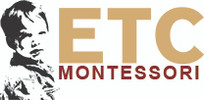Product Overview
For use in Secondary I Y2 C1 NW: Structures
This is the original design by ETC Montessori and features scalloped "energy shells" to symbolize the various energy levels that electrons occupy which are carved directly into the 1-inch-thick solid wood. Re-designed, our board is now constructed entirely out of solid hardwood basswood by Nienhuis. Beautifully carved and encased in a clear semi-gloss sealant and then finished with a second coat of varnish. Once you touch the smooth finish of the board, you begin to understand the work that has gone into this re-design. No detail has been overlooked, from the front of the board all the way to the underside with the stabilization bars, which are firmly screwed into the board and offset by even more stain and sealers.
The Bohr model depicts the atom as a small, positively charged nucleus surrounded by electrons that travel in circular orbits around the nucleus, this is similar in structure to the solar system, but with electrostatic forces providing attraction, rather than gravity. Because of its simplicity, and its correct results for systems, the Bohr model is used to introduce students to quantum mechanics.
Students will be able to build the models of every known element on the periodic table and perform various "what if" scenarios. We are now featuring our individual beads colored in red, blue, and green. Each set includes 100 beads of differing colors, in individual clear boxes, for a total of 300 beads.
Dimensions:
Atom Board: 19 x 19 in or 48 x 48 cm
Includes:
- Teacher instruction and presentation lessons for various concepts (Available Online under Resources)
- 300 beads (100 red, 100 green, and 100 blue) with their own containers
- A complete set of cards printed on our thick plastic, cut and ready to place on the shelf, of all the elements so that students can build atoms and explore additional concepts.
Note: The atom board is made of natural wood. Since wood is a natural product, it is therefore subject to change over time and with daily use. Irregularities in the color, venation, grain, and markings of the wood should not be considered a fault but inherent to the natural beauty of the wood.
RESOURCES
Atom Board - Teaching Effectively
STANDARDS
View the Standards met through this material.









